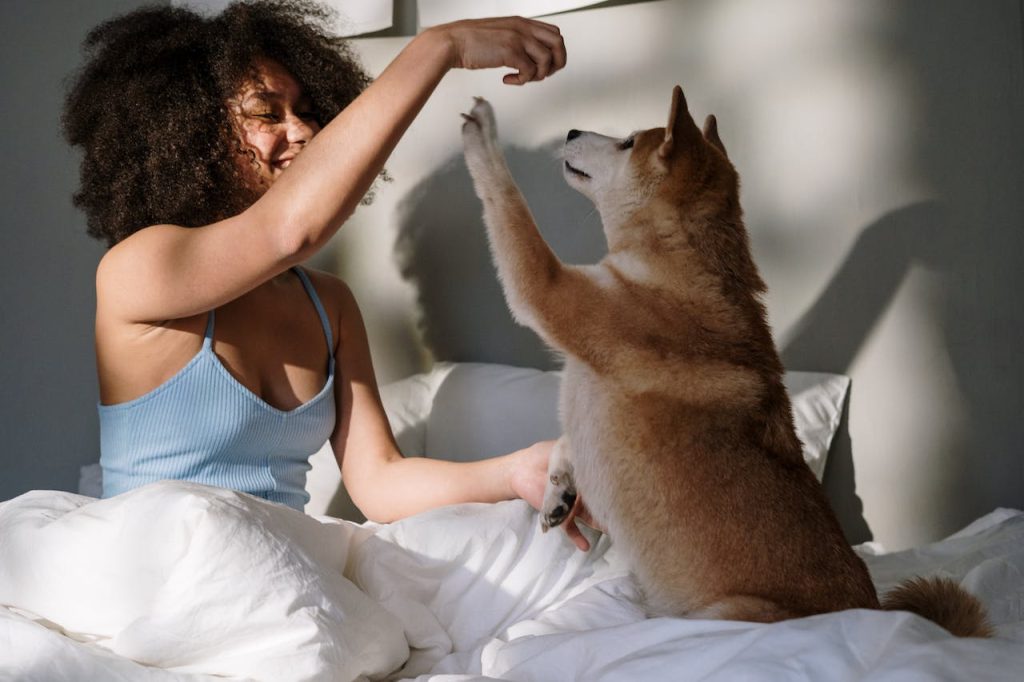Clear communication is the cornerstone of a strong relationship between a dog and its owner, laying the groundwork for mutual understanding and respect. Mastering basic commands is not just about obedience; it’s about creating a language that both you and your furry companion comprehend. This shared language fosters a well-behaved, contented dog and a confident, satisfied owner.
By focusing on these essential commands, you’re investing in your dog’s safety, your peace of mind, and the overall happiness of your household, making this learning process a fundamental aspect of responsible dog ownership.
The Power of Positive Reinforcement
Positive reinforcement stands as a pillar in the realm of dog training, championing a method that rewards desired behaviors, thereby increasing the likelihood they’ll be repeated. This approach builds a positive association with obedience, where treats, verbal praise, and playtime serve as incentives for good behavior. Unlike punitive methods, positive reinforcement fosters a trusting and loving bond between you and your dog, ensuring they respond to training out of eagerness to please rather than fear of reprimand. This method not only enhances the learning experience but also nurtures a deeper bond between pet and owner.
Using Treats Effectively in Training
Treats are a powerful tool in dog training, acting as a tangible reward that motivates and reinforces desired behaviors. For maximum impact, vary the treats to maintain interest, using high-value rewards like “pig ears for dogs” for more challenging tasks or excellent compliance. It’s important to use treats strategically; they should be small to avoid overfeeding and given immediately after the desired action to establish a clear connection between the behavior and the reward.
This approach ensures treats remain effective as both an incentive and a positive reinforcement throughout the training process.
1: “Sit”
Teaching your dog to “Sit” is foundational in dog training, serving as a building block for more complex commands. Start by holding a treat near your dog’s nose, then slowly raise your hand above their head; this natural motion encourages them to sit as they follow the treat. Once their hindquarters touch the ground, immediately say “Sit” and give them the treat along with praise. Practice this in short, engaging sessions to reinforce the behavior. The “Sit” command is incredibly versatile, aiding in managing excitability, establishing calmness before meals or walks, and ensuring safety in various settings.
Command 2: “Stay”
The “Stay” command is crucial for maintaining control and ensuring your dog’s safety. Begin by asking your dog to “Sit.” Once seated, open your palm in front of you, say “Stay,” and take a few steps back. If your dog remains seated, return to them and reward them with a treat and praise. Gradually increase the distance and duration before rewarding. Consistency and patience are key; start in a distraction-free environment and progressively introduce more challenging scenarios. Mastery of “Stay” enhances discipline and can prevent potentially dangerous situations, such as running into the street.
Command 3: “Come”
The “Come” command is essential for recall, ensuring your dog returns to you promptly, thus preventing potentially perilous situations. Begin in a distraction-free area, using a leash if necessary. Call your dog’s name followed by “Come” in an upbeat tone, and reward them with treats and affection upon compliance. Gradually increase the distance and level of distractions as their response improves.
Consistency in practice across various environments solidifies the command. A reliable “Come” is a recall command that offers peace of mind during off-leash activities and can be a lifesaver in unforeseen circumstances.
Command 4: “Leave It”
“Leave It” teaches dogs to ignore potentially dangerous or unwanted items. Start by holding a treat in a closed fist. Let your dog sniff and paw at your hand, but do not release the treat. Once they lose interest or turn away, say “Leave It,” open your hand, and reward them with a different treat. Progress to more tempting items on the floor, using a leash for control if needed.
Reinforce by rewarding your dog only when they obey the “Leave It” command and ignore the item. This command is invaluable for preventing ingestion of harmful substances and promoting disciplined behavior.
Beyond Basics: Continuing Education and Socialization
Mastering basic commands is just the beginning of your dog’s learning journey. Continuous training and socialization are crucial for their development, enriching their social skills and mental agility. Engaging in advanced training classes, interactive games, and regular social interactions with other dogs and people will foster a well-rounded, confident, and happy canine companion.
Wrapping Up
Mastering basic commands lays the foundation for a strong, harmonious relationship between dog and owner, fostering mutual respect and understanding. Embrace the journey with patience and consistency, knowing that each training session brings you closer to having a well-behaved, obedient companion, enriching both your lives with joy and companionship.





